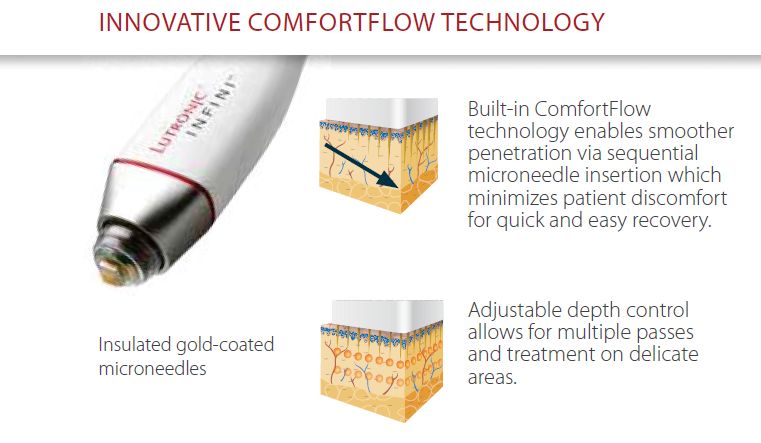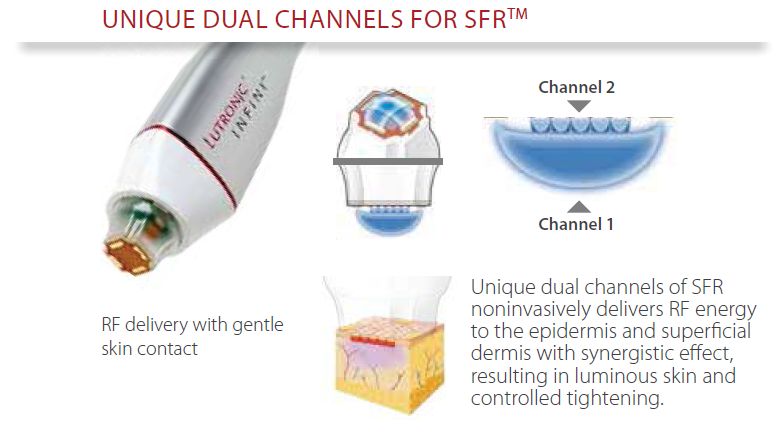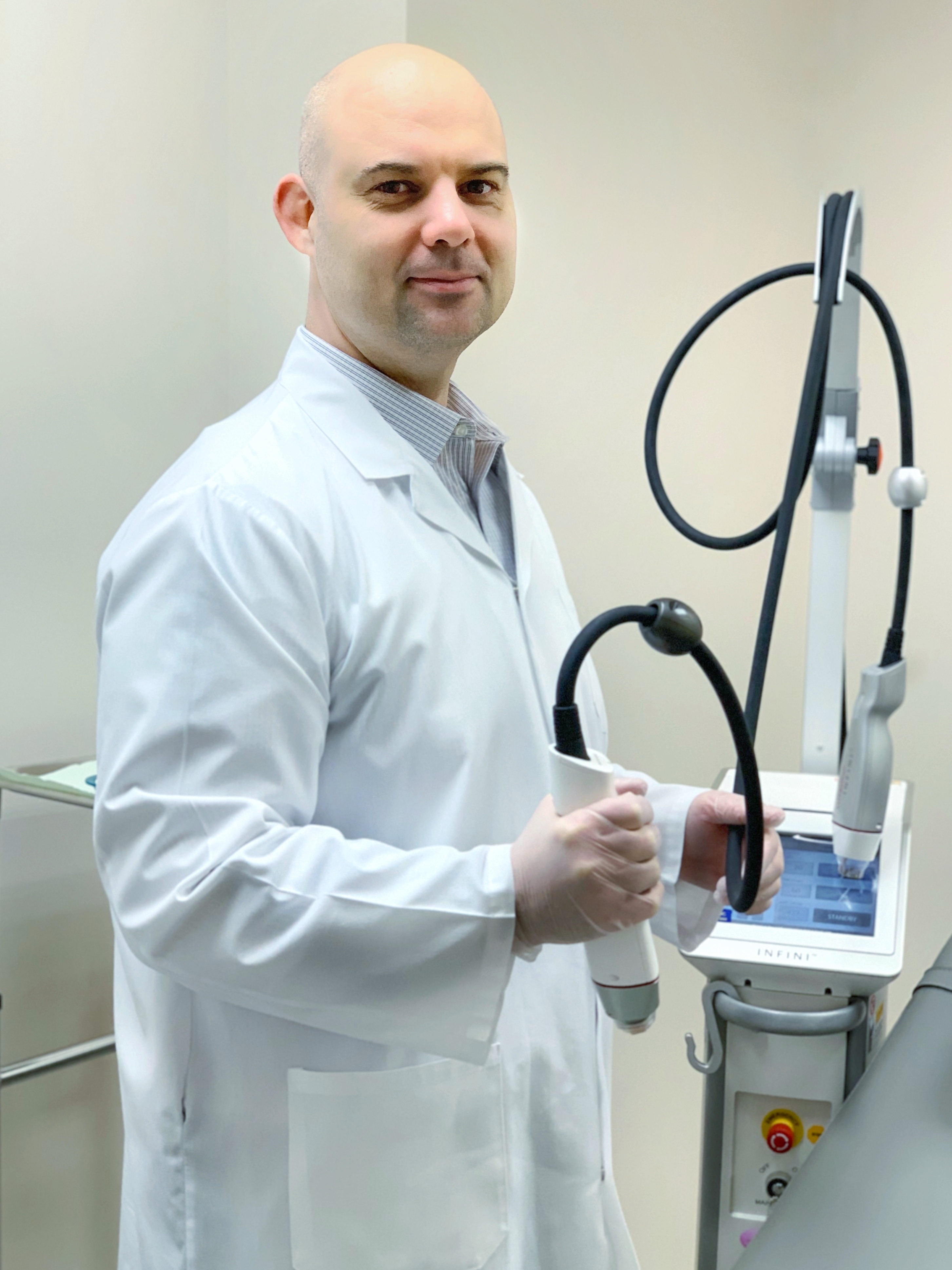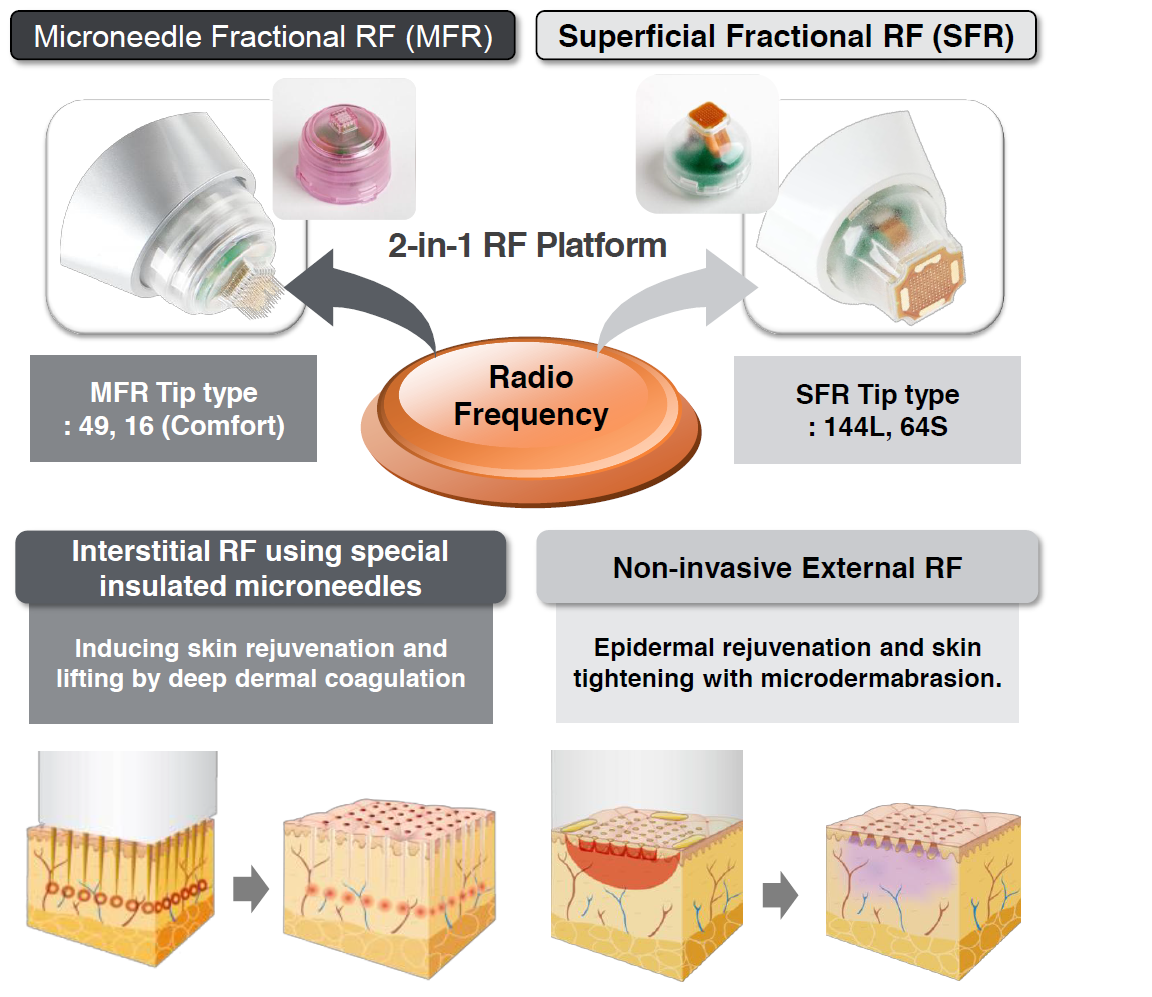WHAT IS HIGH INTENSITY RADIOFREQUENCY?
High intensity focused radiofrequency is an advanced and precise way to deliver energy to the skin comprising of two very effective technologies: MFR (Microneedle Fractional Radiofrequency) and SFR (Superficial Fractional Radiofrequency) that can be used either as stand-alone treatments or in combination supplementing each other.
Treatment of certain skin conditions, such as acne, enlarged facial pores, scars, stretch marks, photodamage, sagging of the skin and even reverse or delaying the natural process of aging is a challenging though an achievable goal.
One of the most promising and scientifically proven technologies in this area of Dermatology is the High intensity focused radiofrequency.
The technology evolved from the traditional external radiofrequency that used the energy of the radio waves to heat the dermis in order to achieve the therapeutic effect in the treatment predominantly ageing skin for tightening. The drawback of the technology is that it creates so called “hot-spots” at the electrodes that require sufficient cooling. Also, the depth of the treatment was practically impossible to control precisely.
The High intensity focused radiofrequency is the most advanced and precise way to deliver energy to the skin at any level from the epidermis to the dermis and subcutaneous tissue up to the depth of 3.5 mm.
The High intensity focused radiofrequency comprises two very effective technologies: MFR (Microneedle Fractional Radiofrequency) and SFR (Superficial Fractional Radiofrequency) that can be used either as stand-alone treatments or in combination supplementing each other.


MICRONEEDLE FRACTIONAL RADIOFREQUENCY
The MFR represents Radiofrequency system with 44 or 16 insulated needles that are gently inserted into the skin in a minimally invasive manner to deliver the heating energy directly into the dermis. As a result, the fractional zones of the discrete microcoagulation at the needle tips are surrounded by the areas of undamaged tissue. The needles are insulated except the tip that helps to avoid the damage of the superficial layers of the skin and decrease potential side effects such as proinflammatory dyschromias. The areas of controlled microcoagulation induce the intense wound healing process and start the cascade of skin regeneration that leads to the synthesis of dermal structural proteins, such as collagen and elastin, connective tissue remodelling, and replenishment of hyaluronic acid.
MFR (Microneedle fractional RF) has shown the scientifically proven efficacy in the following treatments:
- Active Inflammatory Acne
- Enlarged Pores
- Acne Scar
- Excessive Sebum Secretion
- Hyperhidrosis/Osmidrosis
- Stretch Mark, and Skin Tightening
- Periorbital Wrinkles
- Skin Rejuvenation

SUPERFICIAL FRACTIONAL RADIOFREQUENCY
Interestingly, fractional radiofrequency has less adverse events than fractional ablative lasers. The treatment with the High intensity focused radiofrequency is not limited only to dermal matrix. The SFR (Superficial Fractional Radiofrequency) was developed to target and treat superficial layers of the skin, such as epidermis and papillary dermis. The special tip that comprises of 144 pins applied to the surface of the skin not penetrating it and delivers Radiofrequency energy in a fractional pattern. This mode of treatment is also referred as “sublative” (“sub-ablative”).
The SFR is able to ablate not only the superficial epidermis but also to generate focused thermal energy in a cone shape under the ablated zone of epidermis. The SFR is capable to improve superficial irregularities and treat acne scars, striae, wrinkles and perform gentle fractional resurfacing. The SFR and MFR with insulated microneedles are able to create precise and predictable areas of fractional epidermal ablation and deep dermal coagulation and treat various skin conditions. These two advanced energy-based technologies offer a synergistic effect on the skin.

The Centre for Medical and Surgical Dermatology offer treatments with these novel technologies using the most advanced and clinically proven platform on the market (“Infini™”).
